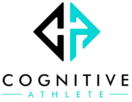
Having spent the last 20 years studying, researching, coaching and experiencing the quest for peak performance with my clients, I know how easy it is to become fixated with achieving it. But can we sustain the highest levels of performance on a daily basis?
A professional athlete knows it’s not a realistic goal to reach their physical peak day in, day out. Of course, they want to achieve this state more often than, but the timing is key. If they try to peak all the time, it inevitably leads to overtraining and underperformance syndrome. To avoid this, it’s critical to identify the differences between optimal training and performance.
Assessing Performance:
Let’s use the example of a professional sports team. When the athletes arrive at the training facility, they are monitored to understand their readiness to perform. This assessment may include:
Wellness and Motivation Questionnaire
Recording of bodyweight
Hydration Status
HRV and Resting Heart Rate (usually collected in the morning)
Performance test – sit and reach test, handgrip strength or jump tests
Sleep – quality and quantity
This ongoing monitoring provides the physical and technical coaches with information to determine the player load – how much the athlete can realistically complete that day – and make the necessary adjustments to ensure they prepare a correct training schedule. Check out our resource on becoming a high performer here.
Now, let’s apply this thinking to a business setting. Do you assess your readiness to work? Do you proactively plan your day? As a leader, are you monitoring your team to identify which members can handle an increased workload or high cognitive tasks at a given time?
Within a corporate environment, we do not monitor the biometric data of our employees for obvious privacy reasons. However, leaders should talk to their employees and consider the variables that may affect performance. It’s important to ask questions, listen to their answers, and adjust your expectations accordingly.
Does your star performer look more tired than usual? Has your best salesperson hit a slump? If this is the case, you should encourage them to slow down their output for a day or two. So many variables affect performance in the workplace – be it physiological, social or emotional – and ultimately, you’ll get a far better track record of performance in the long run by paying attention to and adjusting your team’s micro rhythms of work. You or your team can’t perform at 100% all the time, so take a step back and think about the different areas that will affect performance.
The importance of peak performance in both business and sports can’t be understated. The more we reach peak performance, the more it shifts the needle, which increases optimal performance too. A great example of this is golf. When you improve your game, the bad shots become more infrequent, and your expectations rise. Your optimal performance improves, and peak performance increases.
For me, the central role of a CEO/leader is to be Head of Performance. The performance of your employees determines the success of your organisation. So, what can you do as a leader to shift the needle? You need to understand the importance of health to your team – a healthier team performs better.
If you have any questions about optimal and peak performance, contact us.
Lee
Director And Founder
